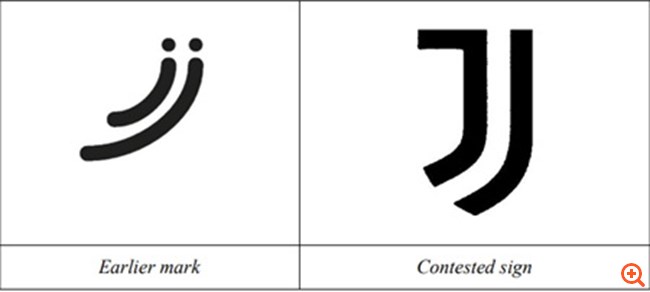

Legal Insight
October 2022
(republished from capital.gr)
Ioannis Psarakis, Lecturer, LL.M (III), PhD Cand.
Ι. Is trademark registration always a smooth process?
It's been almost five years since Juventus (officially Juventus Football Club S.p.A.) attempted a bold rebranding, abandoning its traditional emblem for a more minimal - in abstract terms - version of the letter J.
On December 21, 2021, an interesting decision (R 2803/2019-5) was issued by the Board of Appeals (Border of Appeals) of the European Union Intellectual Property Office (EUIPO) in a legal dispute brought by a company from Belgium (J & JOY S.A.). That company considered that the sign which Juventus sought to register as a European Union trade mark (EUTM) was similar to a degree of 'likelihood of confusion' (which is not allowed) to a trade mark previously registered by it.
The indications on both sides were, in particular, as follows:

II. Is knowledge of case law and administrative practices relevant for trademark registration?
It could be argued that there is indeed a risk that even a non-negligible part of the EU public might 'confuse' the marks in question or even consider that there is a collaborative relationship between the two entities. However, as stated above, this is not permitted. That is to say, if it were so considered, it would be impossible for Juventus to register its new trade mark. The Belgian company's prior right would prevail and the Italian club would effectively have to refrain from using that particular indication for its specific commercial activities.
Although the Belgian company which had registered an earlier trade mark produced a number of earlier decisions, claiming that the result of those decisions led to the conclusion that the signs in question should be perceived as representing the same content (letter j), the Board of Appeals held that this was not the case. We note that if the illustrations were found to represent the same letter, a finding of a likelihood of confusion would be highly probable (hence the legal 'defeat' of Juventus).
The basis for the judgment on the absence of a "likelihood of confusion" was the recent case law of the General Court of the European Union (CJEU). According to that case-law, consumers perceive figurative marks as such, refraining from further non-direct interpretations of the image which would require mental processes and effort ("Accordingly, the Board is aligned with the latest jurisprudence of the General Court of the EU and the Grand Board of Appeal as cited above, which confirmed that consumers will perceive figurative marks 'as such' and will not carry out far-fetched interpretations or mental exercises trying to decipher them").
Regardless of whether one agrees with this judgment - it would not be unreasonable to argue that it is indeed the letter j that is impressed on the mind of the consumer in both cases - the fact remains that Juventus' team came out victorious on and off the pitch. An important role in this was probably played by the knowledge and reliance, on the part of lawyers, on the more recent case law of the CJEU.
Note: A very good informative video on opposition on a national trade mark has been posted by the Ministry of Development and Investment (see here). Although the video concerns a national trade mark, the procedures to be followed are very much the same since - short of boring you with details - they are based on almost identical EU legal texts. In other words, you can trust this video to get information on the EU trademark as well.